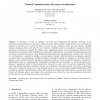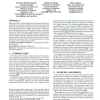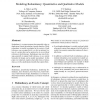87 search results - page 5 / 18 » Exploiting Instruction Redundancy for Transient Fault Tolera... |
ET
2008
13 years 7 months ago
2008
Processor cores embedded in systems-on-a-chip (SoCs) are often deployed in critical computations, and when affected by faults they may produce dramatic effects. When hardware harde...
ET
2007
13 years 7 months ago
2007
In this paper, we focus on reliability, one of the most fundamental and important challenges, in the nanoelectronics environment. For a processor architecture based on the unreliab...
GLVLSI
2010
IEEE
13 years 7 months ago
2010
IEEE
Relentless CMOS scaling coupled with lower design tolerances is making ICs increasingly susceptible to wear-out related permanent faults and transient faults, necessitating on-chi...
ISCA
2000
IEEE
13 years 12 months ago
2000
IEEE
Smaller feature sizes, reduced voltage levels, higher transistor counts, and reduced noise margins make future generations of microprocessors increasingly prone to transient hardw...
AICCSA
2006
IEEE
14 years 1 months ago
2006
IEEE
Redundancy is a system property that generally refers to duplication of state information or system function. While redundancy is usually investigated in the context of fault tole...



